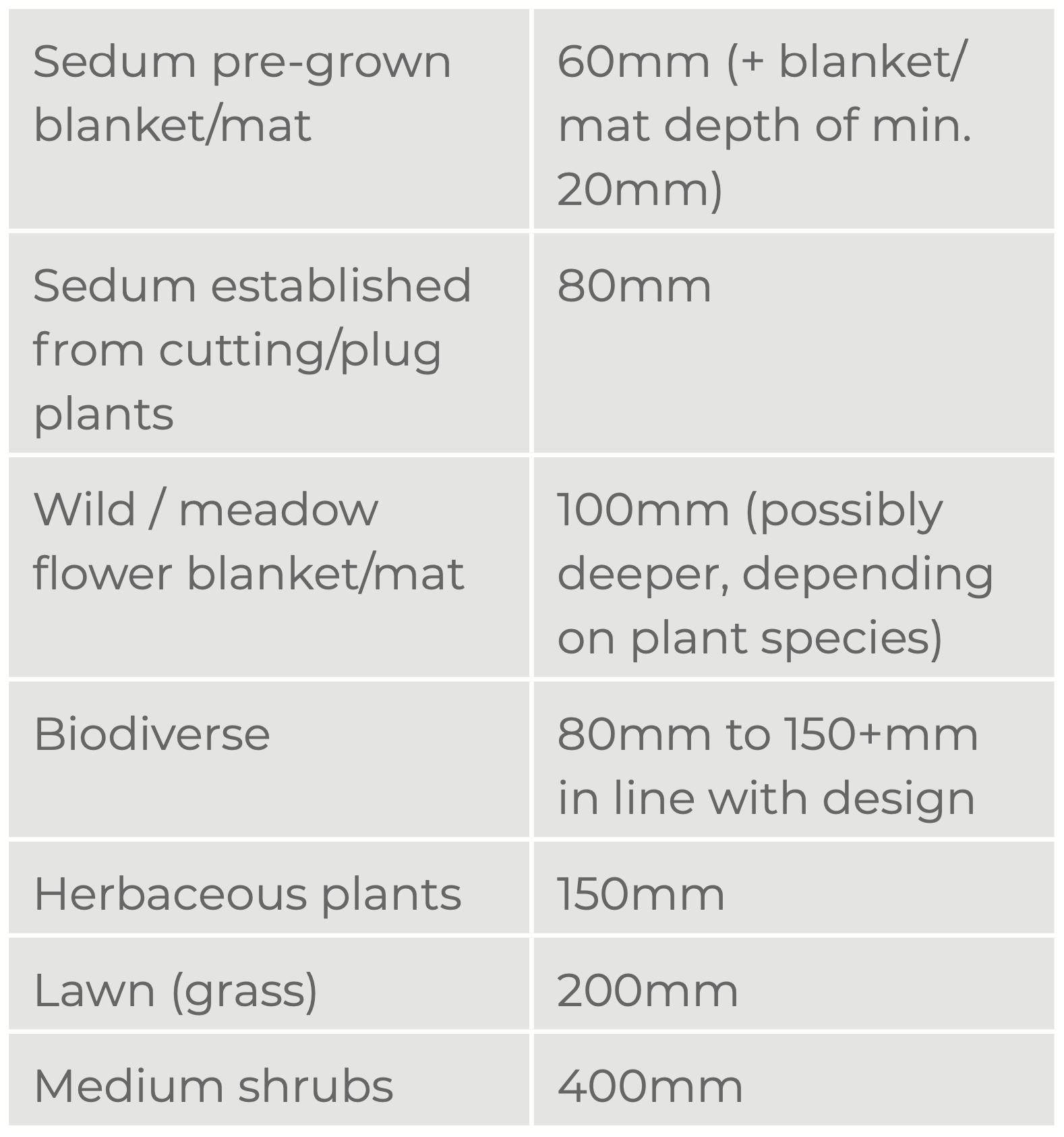Deciding what to grow on a green roof involves lots of careful thought. But please don’t be fooled into thinking that you can only choose between sedums or wildflowers. If you design your extensive green roof buildup to include a good deep layer of substrate, you have an enormous range of plant species that could potentially fit the bill.

Lotus corniculatus, also known as birds foot trefoil is an undemanding little plant which offers a source of high protein pollen for early flying bees.
Photo credit Boningale
Here are a few of our favourite plants to grow on a green roof where the substrate depth is at least 100mm.
- Achillea millefolium
- Allium schoenoprasm
- Campanula (harebell)
- Dianthus
- Echium vulgare
- Galium verum
- Linaria vulgaris
- Lotus corniculatus
- Muscari
- Origanum vulgare
- Petrorhagia saxifraga
- Prunella vulgaris
- Saxifraga granulata
- Scilla autumnalis
- Sedum spurium
- Thymus vulgaris
All of the plants on our list adapt well to most extensive green roofs, but this is by no means a finite list. You will also need to check that your living roof can provide the conditions that each species needs to survive. For example, sun loving plants will wither away on a shaded roof, while large leafed species are prone to wind damage.

Petrorhagia saxifraga, the tunic flower. An alpine beauty whose natural habitat is in the cracks between rocks. It has a long flowering season and can withstand temperatures as low as -20 degrees celcius.
Photo credit Boningale
When deciding what to grow, think about what you want to achieve with your green roof. Are you aiming for a particular aesthetic? Do you want to attract any creatures with specialist needs?
What To Grow On A Green Roof: Deciding Factors
Here’s how to narrow down your plant selection to those species that fit the design criteria for your green roof.
- Substrate depth. A shallow substrate depth will limit your plant palette. See diagram below.
- What are the conditions on your green roof? Sunny? Shaded? Exposed to the wind.
- Consider ongoing plant care – how far will your maintenance budget stretch? Do you want a low maintenance extensive green roof or a more carefully managed intensive green roof?
- Ecological matters. Are you focussed on creating habitat for a particular species of insect or bird? Consider factors such as preferred food plants, nesting sites and overwintering behaviours.
- Productivity. Could your green roof support edible plants?
- Aim for a diverse mixture of plant species – a monoculture can be destroyed in one season if it is affected by disease or the ‘wrong’ weather.
- Aesthetics. What ‘look’ are you aiming for? Neat and contemporary? Blending with the wider landscape? Wild and wonderful?
- It’s ok to include non-native plant species
- Plant growth habits. Try to avoid the ‘bullies’. They’re great at creating full plant coverage in a hurry but you could end up with a monoculture within as little as 2 seasons.
- How is your roof to be established (seed, plugs, pots grown plants, modules or vegetation blankets). Do you need instant coverage or can you wait for seeds and smaller plants to establish?
- Irrigation and fertilisation. If you wish to minimise running costs and optimise the environmental benefits of your living roof, consider plants that are drought tolerant and have relatively low nutritional requirements. You WILL need irrigation in the early stages of plant establishment.
- Avoid potentially invasive plants and anything with the type of root system that may damage waterproofing

Saxifraga granulata brings a welcome display of colour to a green roof in early spring. This beauty will tolerate more shallow substrates.
Photo credit Harrowden Turf
Futureproofing Your Green Roof Planting
Your living roof is a long term investment and so it is well worth thinking about plants that will cope well with climate change. Non-native species are likely to be your friend here. Think about plants from hotter or mountainous regions – places with weather patterns similar to those that you can expect to experience in your own region in the years to come. Don’t forget that there’s more to green roofing than aesthetics and survival of the plants. Look for species that will also provide valuable resources for wildlife.
What Will Grow In The Depth Of Substrate On My Green Roof?
Substrate depth is arguably have the biggest influence when deciding what to grow on your green roof. However, if you are limited by the loading factor on your building, you could consider varying the substrate depth across the roof in order to achieve greater biodiversity. If the construction of the roof allows, you can create dips and hummocks in the growing medium to facilitate growth of species that need more root room. Perhaps consider using raised beds too – they’re great for food production. For safety’s sake, check with your green roof designer and your structural engineer before changing the weight distribution on your roof.

Choosing Plants To Create Wildlife Habitat On Your Green Roof
“If you plant it they will come” an interesting view on habitat creation, which works to an extent at ground level. But wildlife is fickle. Some creatures are very fussy about where they live, breed and raise their young. And of course, a green roof may not be accessible to every species. Although green roof ecologists are often bamboozled as to how certain creatures have found their way onto a roof. Spiders for example, don’t fly – yet they don’t take long to populate the green space on a roof.

Origanum vulgare – wild oregano. A super little green roof plant. Bees love it.
Photo credit Boningale
Green roofs have enormous value to wildlife. As part of green corridors, they can ensure that different colonies can mix and share gene pools. They are great rest stops, particularly in urban environments where green areas are a long way apart. Even 500 metres is a very long way to travel if you are only 5mm long! And of course green roofs are often a vital source of food for the creatures that our own food chain depends upon.
When choosing green roof plants, take into account the kind of creatures who most need food, resting places, nest sites in your area. Which plants will benefit them the most? Can you compromise between wildlife habitat and the aesthetic you want to create?
GRO’s very own Dusty Gedge is synonymous with the creation of green roofs that have likely saved the black redstart from extinction. If you need inspiration – read this article.

Don’t be afraid to create a range of different plant populations on your living roof. This community garden in Milton Keynes produces food for humans and for wildlife.
Photo credit Bridgman and Bridgman
You might find these articles useful
How To Establish Plants On A Green Roof
Top Ten Green Roof Plants – article from GRO members Harrowden Turf.
E-learning course unravels the mysteries of green roofing
GRO Green Roof Code Of Best Practice.

